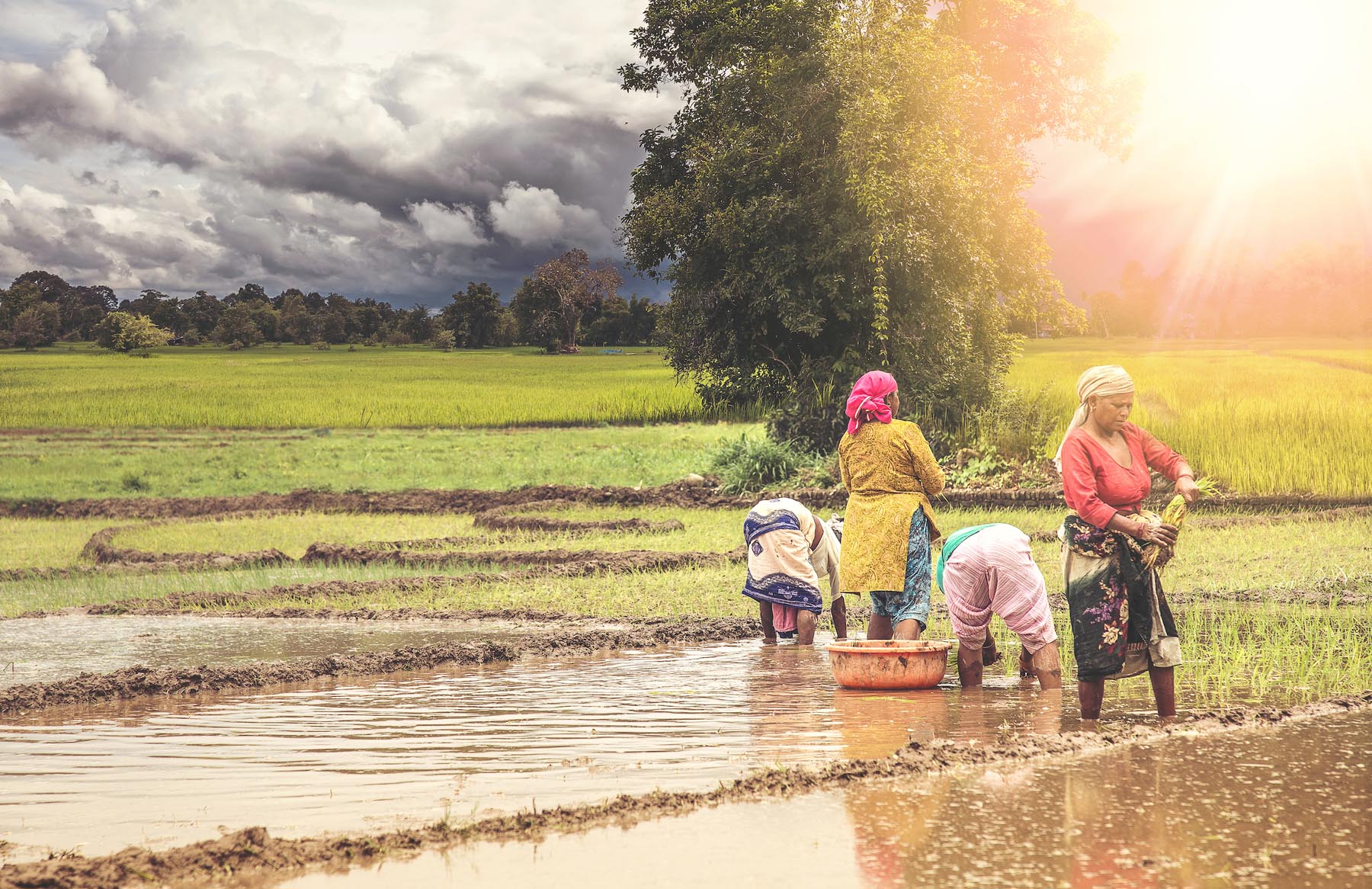In which regions will agriculture and food security be most affected by climate change? That depends on how you define “affected”. Climate change can affect agricultural outcomes on many levels. Climate change can decrease (or in some cases increase) yields, which in turn impact farmer livelihood. Climate change affects world prices. This means that the value of production, which influences trade position and foreign exchange generation, and thebalance of agricultural trade, which impacts national fiscal balances and food security, can be impacted by climate change. Finally, climate change can affect human nutrition, which can be measured, albeit imperfectly, from food availability.
In the research monograph Food Security, Farming, and Climate Change to 2050 we consider four different climate change scenarios. Our results reveal that across these scenarios regional cereal yields will be anywhere from 10 percent higher (East Africa in the “MIR A1B” scenario) to 35 percent lower (North America in the “MIR A1B” scenario) in 2050 with climate change than in a “perfect mitigation” scenario, where all greenhouse gas emissions are halted and the inertia in the climate system is overcome. For most regions of the world, cereal yields (and root and tuber yields, which are equally if not more important for many of the world’s poor) look to be higher with some climate change scenarios than with perfect mitigation, and lower with other scenarios, demonstrating the high uncertainty of regional outcomes.
A good way to capture how climate change could impact different regions that considers both domestic production and international prices is to look at balance of agricultural trade. Our results indicate that among net food exporters (in 2050)3, Southeast Asia will have net exports most positively impacted by climate change (38-56 percent higher depending on the scenario). Central America looks to have net exporters most negatively affected (22 to 42 percent declines). North American net exports could be pushed either way on the order of up to 30 percent, depending on the climate scenario.
Among net importers (in 2050) North Africa will be by far the most impacted by climate change, with net imports 230 to 480 percent higher with climate change than with perfect mitigation. Central Africa will see imports most diminished with climate change, from 45-62 lower percent compared with perfect mitigation. Two very interesting cases are Southern Europe (a net exporter in 2010) and Western Africa (a net importer in 2010). With perfect mitigation, Southern Europe will continue to be a net exporter in 2050 and Western Africa will continue to be a net importer. However, with climate change either one could end up switching from importer to exporter, or vice versa.
One consistent finding across the four climate change scenarios we investigate is that there will be less food per person worldwide in 2050 with climate change than with perfect mitigation. Climate change will most drastically impact daily per-capita calorie availability in Western Africa, from 240-344 less calories per-person per-day, although the effects also look to be severe in Central, East, and North Africa and East Asia. That climate change will decrease food availability to populations that already have some of the lowest consumption levels is a major concern. Climate change will have the smallest impact on per-capita calorie consumption in Oceana, throughout Europe, and in South America, with decreases of less than 200 calories per day.
So, which region will be most impacted by climate change? In terms of yields and trade, the Middle East and North Africa look poised to take the biggest hit. North America, whose production weighs heavily on world prices, stands to be impacted by climate change, but the direction of the impacts are highly uncertain. In the end, however, Africa will be most impacted by climate change based on the metric that matters the most; food availability after trade.
Read more in Food Security, Farming, and Climate Change to 2050: Scenarios, Results, Policy Options. You can also test these results yourself on the interactive map visualization tool, Food Security CASE Maps.
- The regions we use here are Central Africa, Eastern Africa, Northern Africa, Southern Africa, Western Africa, Caribbean and Central America, North America, South America, Central Asia, East Asia, South Asia, Southeast Asia, Middle East, Eastern Europe, Northern Europe, Southern Europe, Western Europe, and Oceania. The list of countries in each of the regions can be found in the monograph appendix 1.[back]
- MIROC and CSIRO global circulation model results using the A1B and B1 scenarios.[back]
- Our results indicate that most net importing regions today will remain net importers in 2050, and the same goes for net exporting regions. The exception is Central Asia, which is currently a net importer but will be a net exporter in 2050.[back]







